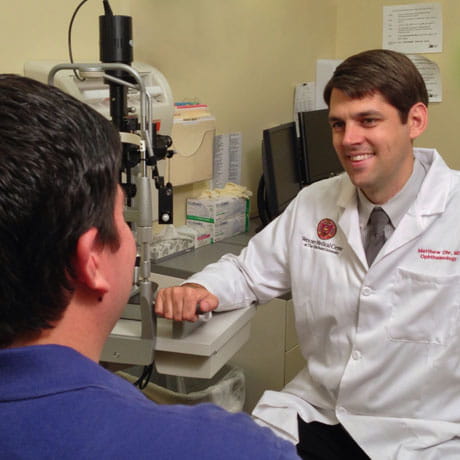
Diabetic Macular Edema
The Department of Ophthalmology & Visual Sciences provides opportunities to join clinical trials listed below. We are led by fellowship trained physicians, site-specific research coordinators and managers, and genetic counselors. We offer specialized equipment and certified ETDRS vision clinic spaces as well as translational lab space for unique research opportunities.
For more information, please contact the research office at 614-293-5287 or at research@osumc.edu